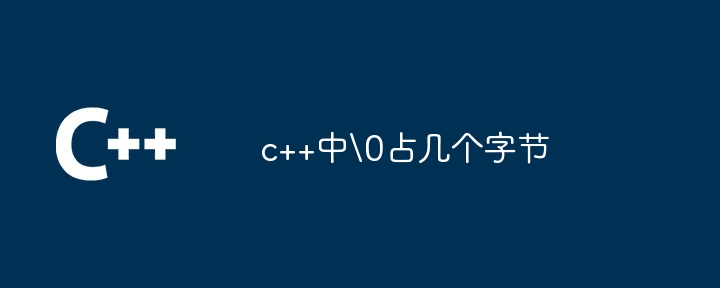Home >Backend Development >C++ >How many bytes does \0 occupy in c++
How many bytes does \0 occupy in c++
- 下次还敢Original
- 2024-05-09 04:24:171136browse
\0 in C usually occupies 1 byte because it is the null character that indicates the end of the string. In some cases it may take up multiple bytes: - Unicode strings in Windows: 2 bytes - UTF-8 encoded strings: 1 to 4 bytes. \0 is crucial for string operations, and knowing its size in bytes is crucial for memory management and efficiency.
 occupy in c++" >
occupy in c++" >
#How many bytes does \0 in C occupy?
\0 in C is a null character, which indicates the end of the string. It occupies one byte in most computer systems.
Why does \0 occupy one byte?
In early computer systems, strings were usually represented using fixed-length arrays. In order to determine the length of a string, a special character is required to indicate the end of the string. The ASCII code table designates 0 (decimal) as the null character, which is assigned a byte in most systems.
Other lengths of \0
Although \0 usually occupies one byte, in some cases it may occupy multiple bytes:
- Unicode strings in Windows: Unicode strings use 2 bytes to represent each character, so \0 will also take up 2 bytes.
- UTF-8 encoded string: UTF-8 is a variable-length encoding used to represent Unicode characters. \0 can occupy 1 to 4 bytes in UTF-8, depending on its position in the string.
Importance
\0 is a very important character in C programming. It is used to determine the length of a string and is critical for string processing operations. Understanding the byte size of \0 is critical to understanding memory management and efficiency of string operations.
The above is the detailed content of How many bytes does \0 occupy in c++. For more information, please follow other related articles on the PHP Chinese website!

